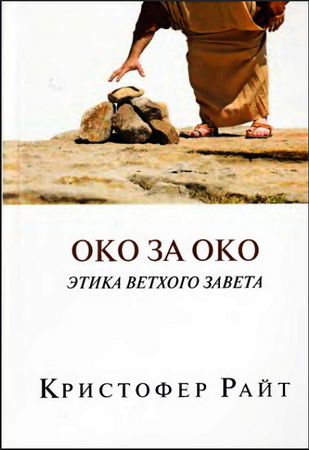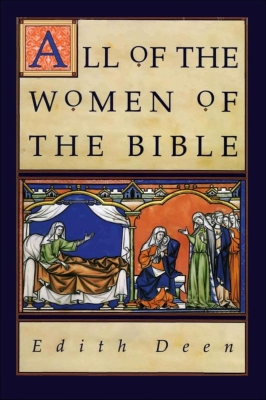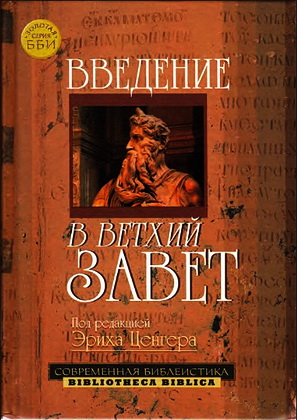
Deen - All of the Women of the Bible
Edith Deen - All of the Women of the Bible
Harper & Row, Publishers, 1988. – 409 p.
ISBN 0-06-061852-3
THE idea for this book sprang from a story I wrote on Lydia, the businesswoman described in Acts. For more than twenty-five years I had edited a woman’s department for a metropolitan newspaper and written a daily column, “From a Woman’s Corner.” One day a prominent layman of the Southwest suggested that I devote a column to Lydia, who, according to the record in Acts, was the first person in Europe to be won to Christianity by the Apostle Paul.
The Lydia story brought letters from readers, who suggested a series on women of the Bible. This idea challenged me. Today the Bible, churches and religion have become big news. In our regional libraries I found many books on women of the Bible, but none was comprehensive. The demand for these books was great, for I saw that many were well-worn; others, though written decades earlier, were still in use. One of these — and one of the best — had been written by Harriet Beecher Stowe, author of Uncle Tom’s Cabin.
When my articles on twenty-five prominent women of the Bible appeared they were thought to be the first series on this subject to appear in any American newspaper. The interest manifested by our local ministers as well as by other readers encouraged me. Letters came from many areas, suggesting that the articles be published in book form. I realized, however, that the need was not for another book on a few prominent women but for a comprehensive encyclopedia or dictionary including all of the women of the Bible.
About this time I read a history of the publishing house of Harper. On the first page of this book, published in 1910, I found the names of Lydia, Phoebe and Rebekah, all Bible names of women in the Harper family prior to the Revolutionary War when James Harper, grandfather of the four brothers who founded the house of Harper, emigrated from England to America.
Remembering that Jesus had said, “If ye have faith as a grain of mustard seed…nothing shall be impossible” (Matt. 17:20), I wrote to Harper & Brothers, asking if they would be interested in a book on all of the women of the Bible. Their response was immediate and the project received the careful attention of the late John B. Chambers, whose skill and patience lightened my task. While I was preparing the manuscript, William Schoenberg, southwestern sales representative for Harper, visited our home several times and showed real personal interest.
Our task soon became engrossing. My husband helped me, often working in our home library from dinnertime until the early morning hours, searching out all the named and nameless women of the Bible. This was pioneer research for no single source book included them all. Meanwhile, I worked on the Searching Studies of women in the foreground, some fifty of whom were now on my list.
We built an extensive collection of Bible and religious books so that we could do much of our research in our home. Dr. L. R. Elliott, librarian at the Southwestern Baptist Seminary, aided us in many ways. We searched for books on women of the Bible in bookstores and libraries, wherever business took us from the Atlantic to the Pacific Coast, from the north to the south. I worked in the Congressional Library and the New York Public Library as well as libraries in Boston, Los Angeles, San Francisco, Chicago and St. Louis. I found material in the libraries of the Pacific School of Religion and Texas State College for Women, where I am a member of the board of regents.
These women of antiquity became my personal friends and daily companions as I worked month after month from 5:00 A.M. until bedtime writing, rewriting and studying. Often it seemed that such vivid personalities as Sarah, Rebekah, Rachel, Hannah and Mary, the Mother of Jesus, were actually in my sunny yellow study. I discovered their stories are among the most exciting on record. Here in this Bible portrait gallery — the greatest in all literature — are women of our common humanity.
* * *
SALOME, MOTHER OF JAMES AND JOHN
MATT. 20:20; 27:56; MARK 16:1-8
Is called mother of Zebedee’s children at well as Salome, but with her sons, her portrait is most clearly drawn. Of Jesus she makes a special request for them. Afterwards she is with Jesus at the Crucifixion and also at the tomb at the time of the Resurrection.
“YE KNOW NOT WHAT YE ASK”
NEXT to His own mother, the most notable mother to cross Jesus’ path during His ministry was the mother of the disciples James and John.
In two places in the Gospel of Matthew she is identified merely as the mother of Zebedee’s children. In Mark she is called Salome at the Crucifixion (Mark 15:40) and at the Resurrection (Mark 16:1). But immortality comes to her not as Salome or as the wife of Zebedee but as the mother of James and John.
Her two sons belonged to the inner circle of disciples. Some scholars infer from John 19:25 that she was a sister of Mary, the mother of Jesus. Other scholars dispute the inference. Whether she was or not, we know that she and her sons were very close to Jesus.
She became so humanly ambitious for her sons to enjoy extra prestige during Jesus’ ministry that she made a special public request of Him. Toward the end of His ministry she and her sons knelt before Him, and she said to Him, “Grant that these my two sons may sit, the one on thy right hand, and the other on the left, in thy kingdom” (Matt. 20:21).
In His wisdom, Jesus answered this zealous mother thus: “To sit on my right hand, and on my left, is not mine to give, but it shall be given to them for whom it is prepared of my Father” (Matt, 20:23).
Quite natural it is to suppose that the other ten disciples were ambitious for these places, too, and must have felt that this mother had made a very selfish request. Probably she needed Jesus’ tender rebuke in order to learn that true spiritual greatness was not a thing to be given but to be earned, and that it could be earned only through sacrifice.
Then Jesus followed His rebuke of the mother of James and John with His marvelous definition of true greatness: “Whosoever will be great among you, let him be your minister” (Matt. 20:26).
This mother had been presumptuous enough to put her own human ambition for her sons James and John above their spiritual preparation. But in her zealousness she typifies many mothers. However, she provides a striking contrast to Mary, Mother of Jesus, who never at any time expressed any human ambition for her son. Even when great things were spoken to her about Him, she “pondered these things in her heart.”
But the mother of James and John publicly expressed her dreams and hopes, probably before the multitude. We cannot be too severe on her, for she remained one of the most faithful followers of Jesus to the end, making us know that she never faltered in her service to His mission.
And evidently she handed down a rich spiritual legacy to her sons. Her son John was the disciple who most perfectly apprehended the spirit of Jesus and to whom Jesus entrusted His own mother at the end. He may have written the Fourth Gospel, though some scholars question this.
John had attended the preaching of John the Baptist at the Jordan and doubtless came back with Jesus to Galilee and was with Him at the wedding in Cana. He also was with Him at the raising of Jairus’ daughter and at the Transfiguration. Finally, at the last supper he occupied the place next to Jesus at the table (John 13:23). Because of his deep spiritual insight and loving disposition, John had merited his mother’s request.
The other son, James, probably the older of the two, was a faithful disciple also. After the Crucifixion we find James with other disciples in Galilee and in Jerusalem. His life ended by the sword at the hands of Herod Agrippa, and James thus became the first of the twelve apostles to seal his testimony with his blood. There is no record that he sat next to Jesus, but he became one of His most trusted apostles.
Both sons of this ambitious mother succeeded nobly, and she could hold her head proudly to the end. Because of her unusual request, Matthew has given her a special place in his Gospel. However, Mark says that it was the sons, and not the mother, who made the request to sit on the left and the right of Jesus (Mark 10:35-40).
There is every evidence that this mother and her sons and their father Zebedee gave of their substance as well as of themselves all during Jesus’ ministry. The mother was one of that faithful band of women whose special sympathetic service helped His mission.
It is natural to suppose that she occupied a rather prominent place in her own community, for her husband Zebedee was a fisherman whose boats were probably moored near the banks of a small stream that empties into the Sea of Galilee. And he had servants who are mentioned as attending to duties with his fishing boats, an indication that he was a man of some means. Their home was on the shores of the Sea of Galilee at Capernaum or at Bethsaida.
In the days of Jesus’ ministry this ambitious mother of James and John had probably confused worldly position and spiritual greatness. But like others, she learned many noble lessons from Christ. And as one of the faithful who ministered to Him until the end she probably became an example herself of Christ’s definition of true greatness, as did her two sons, who became His unrivaled servants.





Комментарии
Пока нет комментариев. Будьте первым!